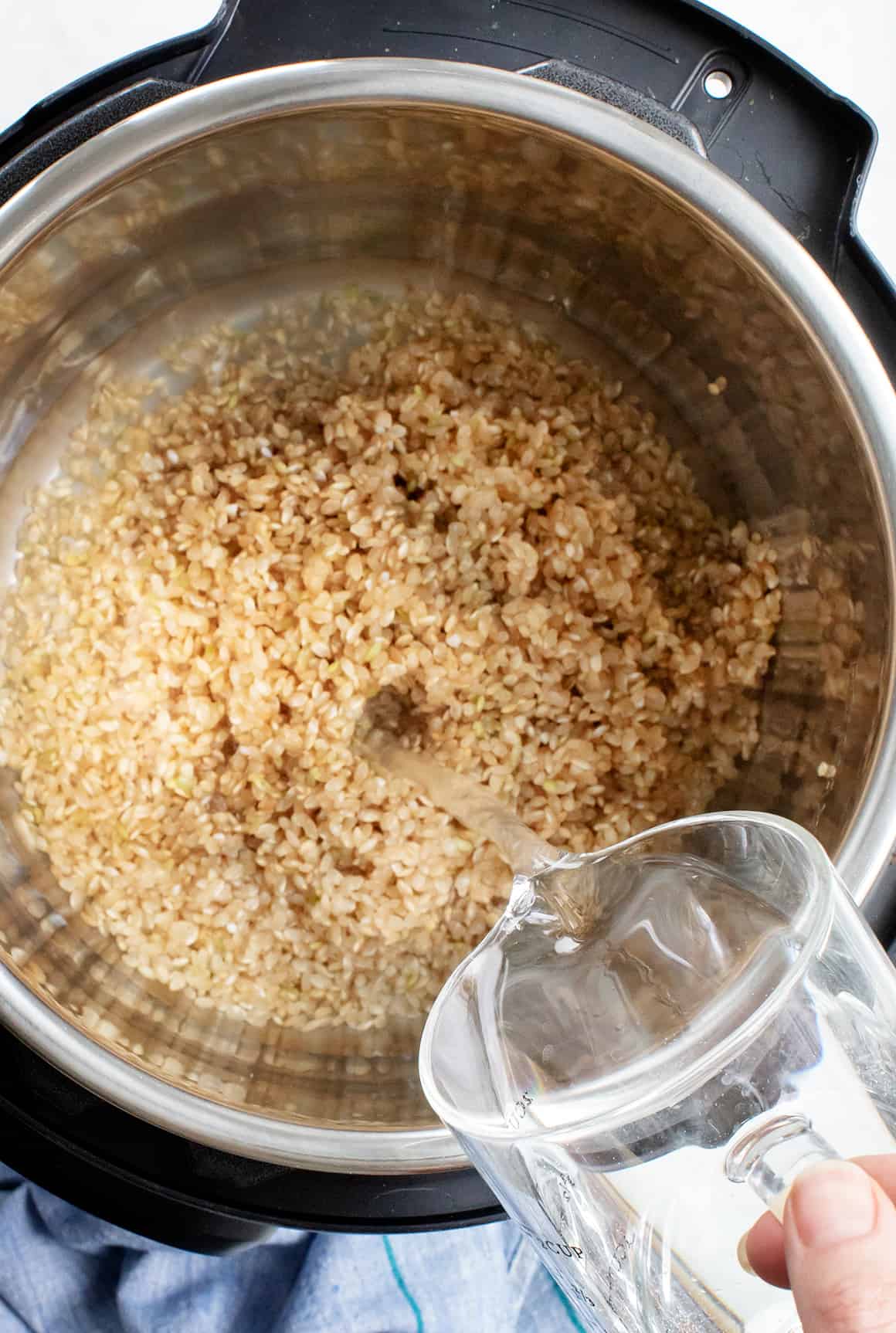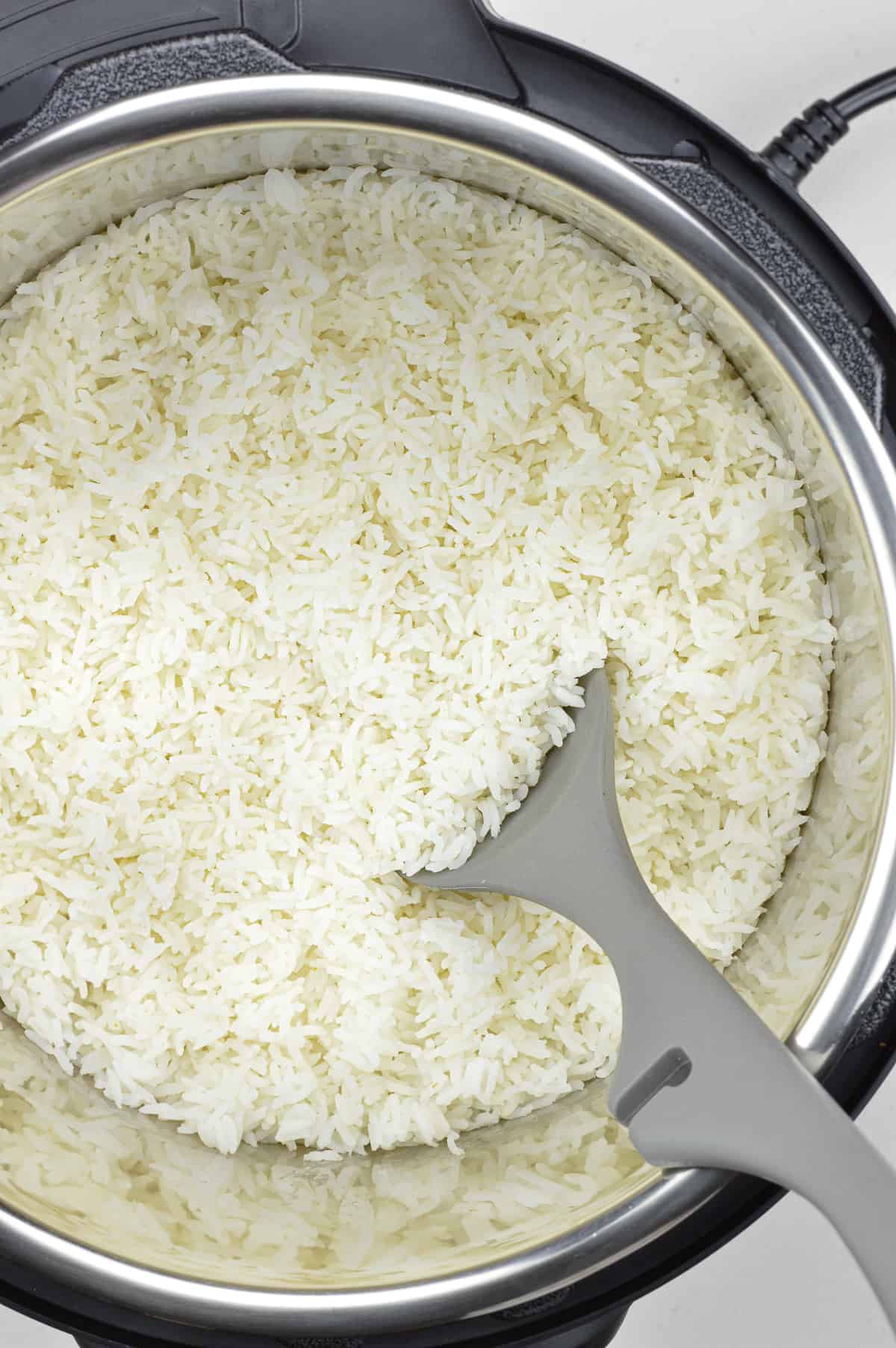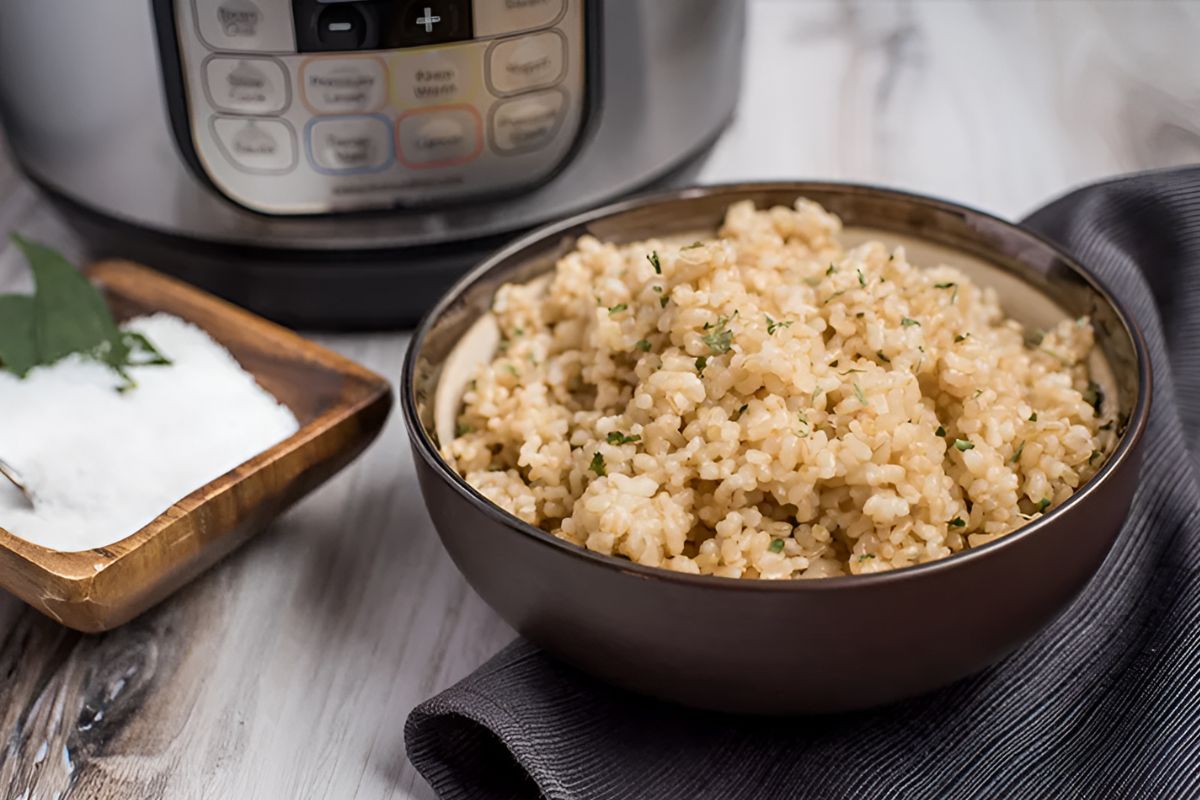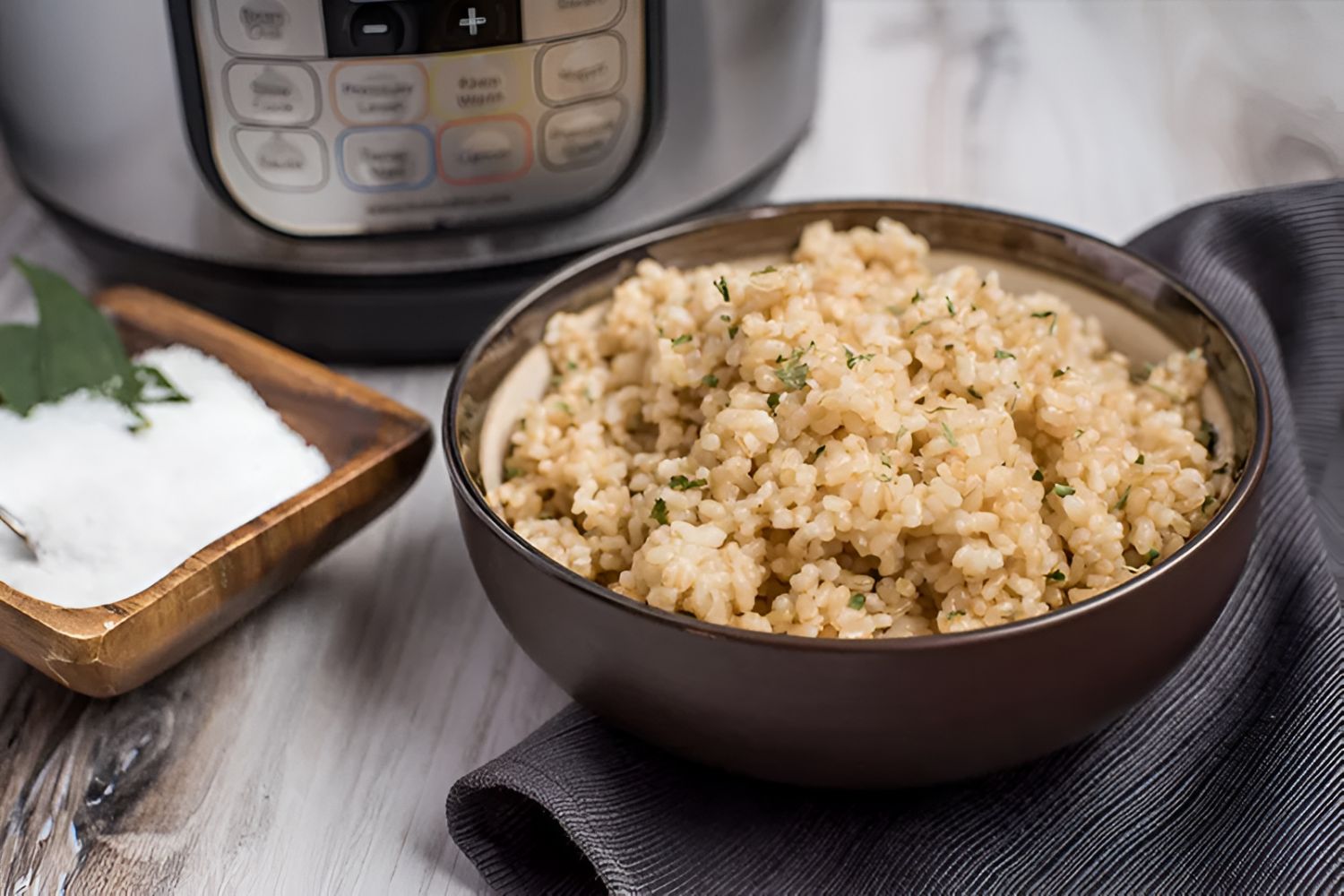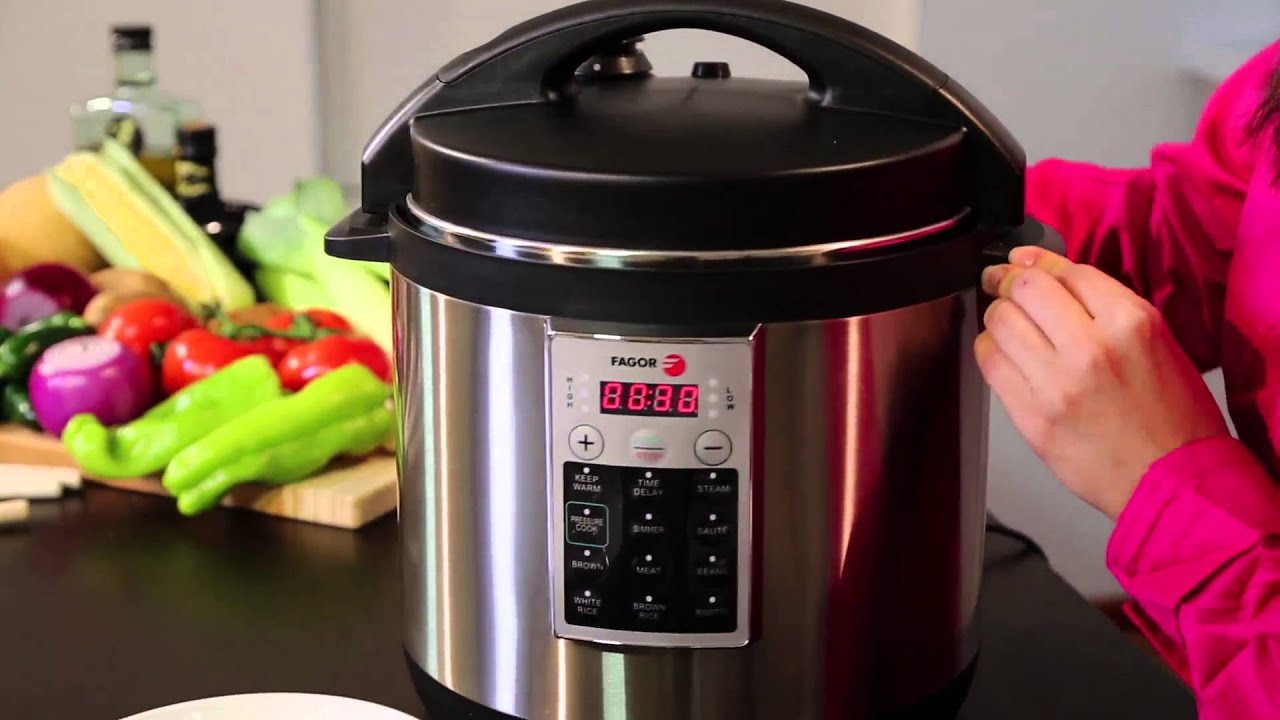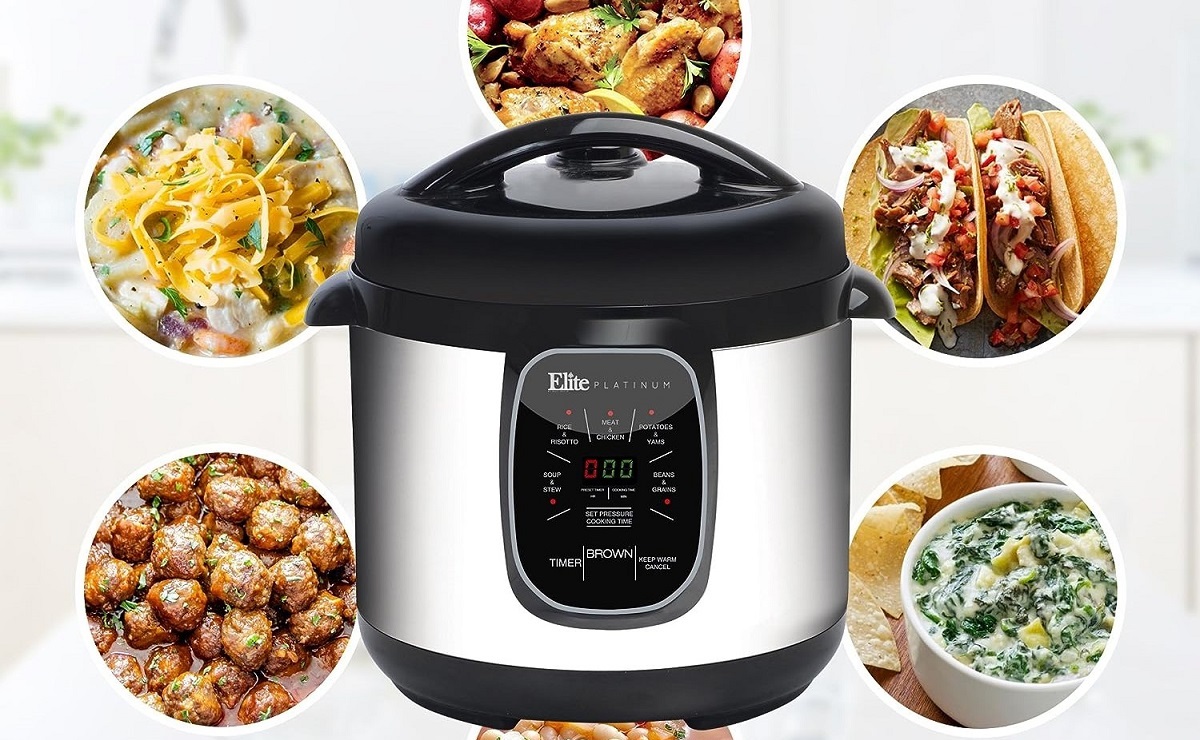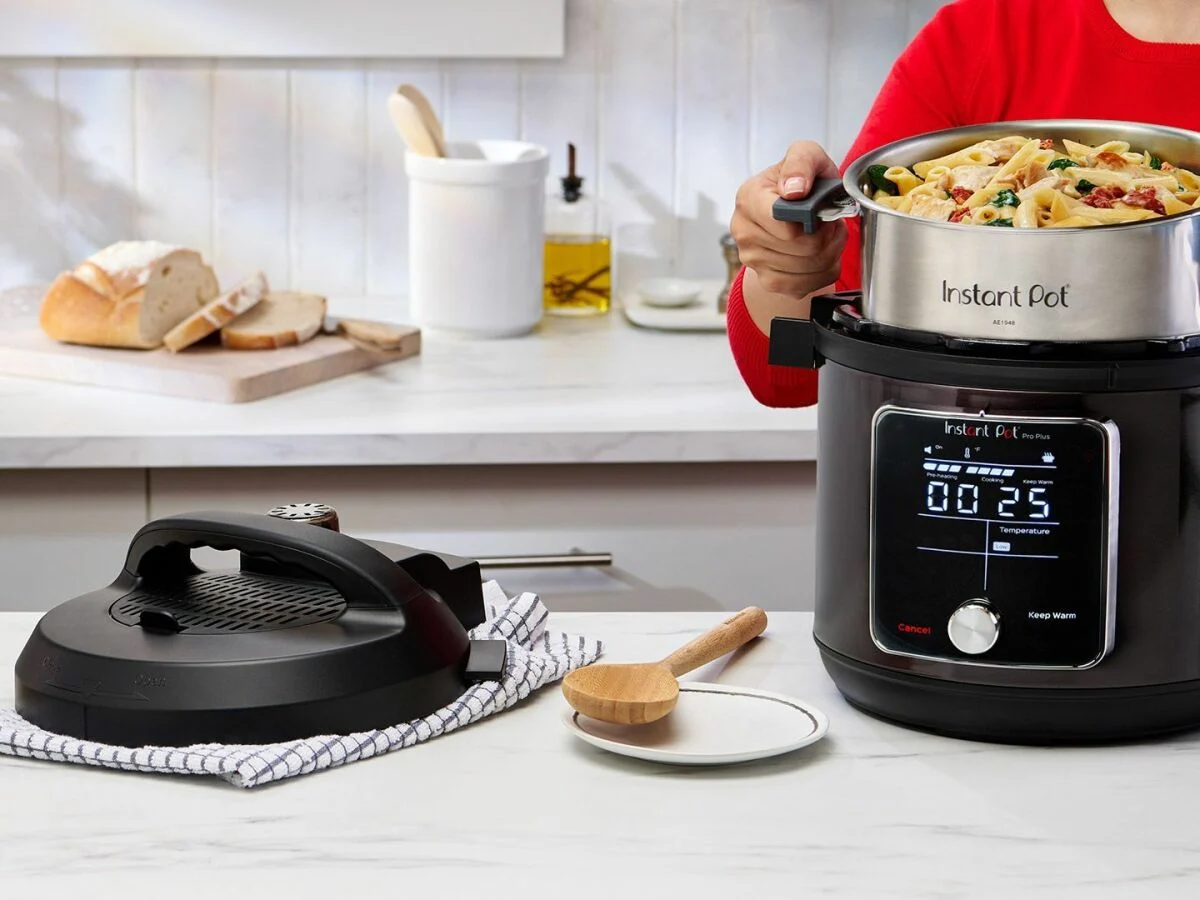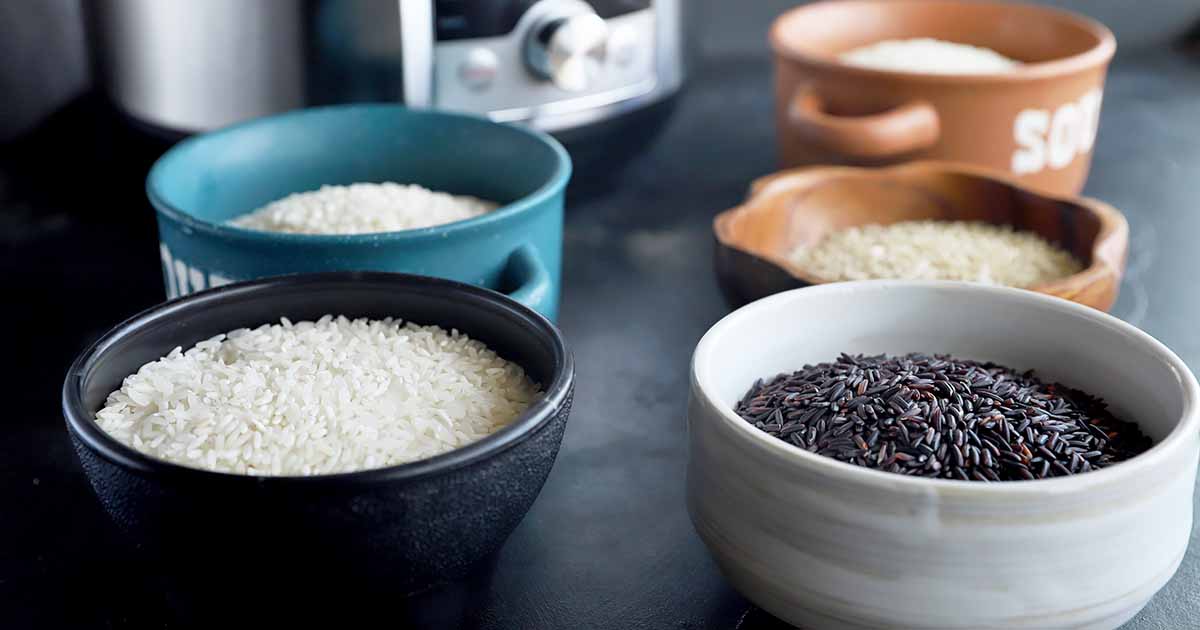Preparation
Before you begin cooking brown rice in your electric pressure cooker, it’s important to make sure you have all the necessary ingredients and equipment ready. Here’s what you’ll need:
1. Electric pressure cooker: Make sure your cooker is clean and in good working condition.
2. Brown rice: Choose high-quality brown rice for the best results. You can opt for short, medium, or long-grain brown rice, depending on your preference.
3. Water: You’ll need water to cook the brown rice. The amount will vary depending on the type of rice and the desired texture. More on this later.
4. Measuring cup: Use a measuring cup to accurately measure the rice and water ratios.
5. Colander or strainer: This is useful for rinsing the brown rice before cooking. Rinsing helps remove any excess starch and impurities.
6. Optional ingredients: If desired, you can add a pinch of salt or a drizzle of olive oil to enhance the flavor of the rice.
Once you have gathered all the necessary ingredients and equipment, it’s time to start preparing the rice. Begin by measuring the desired amount of brown rice according to the number of servings you want to make. A general rule of thumb is to plan for ½ to ⅔ cup of uncooked rice per person.
Next, place the rice in a colander or strainer and rinse it under cold running water. Gently swish the rice around with your hands to ensure all the grains are thoroughly rinsed. Rinsing the rice helps remove any debris or excess starch, leading to fluffier cooked rice.
After rinsing, let the rice drain for a few minutes in the colander to remove any excess water. It’s important to note that brown rice requires more water than white rice during the cooking process. The ratio of water to rice typically ranges from 1.5 to 2 cups of water for every cup of brown rice, depending on the desired texture. Experiment with different ratios to find the one that yields the perfect texture for you.
With your brown rice rinsed and drained, and the water-to-rice ratio determined, you’re now ready to proceed with cooking the brown rice in your electric pressure cooker. In the next section, we’ll guide you through the step-by-step process of using an electric pressure cooker to cook fluffy and tender brown rice.
Getting Started with Your Electric Pressure Cooker
If you’re new to using an electric pressure cooker, don’t worry! It’s quite easy and straightforward. Here’s how to get started:
1. Read the manual: Before using your electric pressure cooker, take some time to read the instruction manual. Familiarize yourself with the different parts, buttons, and safety features. Understanding how your specific model operates will ensure a smooth cooking process.
2. Perform a water test: It’s a good practice to perform a water test before cooking any food in your electric pressure cooker. This test will help you become accustomed to the cooking time, pressure release methods, and overall functioning of the appliance. Refer to your manual for specific instructions on how to perform the water test.
3. Prepare the cooker: Make sure the inner pot of your electric pressure cooker is clean and dry. Check that the sealing ring is properly fitted and in good condition. Ensure that the pressure release valve is in the sealed position before starting the cooking process.
4. Plug it in: Connect your electric pressure cooker to a power source. Most models have a digital control panel where you can adjust the cooking settings. Set the desired pressure level according to the requirements of your recipe.
5. Pre-heating: Some electric pressure cookers require pre-heating before adding the ingredients. Check the cooking instructions in your manual to determine whether pre-heating is necessary for your specific model. If so, allow the cooker to pre-heat according to the manufacturer’s recommendations.
6. Add the ingredients: Once your electric pressure cooker is pre-heated (if required), it’s time to add the rinsed and drained brown rice. Pour the measured rice into the inner pot, ensuring it is evenly distributed. Add the appropriate amount of water based on the predetermined water-to-rice ratio.
7. Secure the lid: Place the lid on the electric pressure cooker and ensure it is properly aligned and locked in place. Some models have a locking mechanism that indicates when the lid is secure. Double-check that the pressure release valve is in the sealed position.
With your electric pressure cooker set up and the rice and water inside, you’re now ready to begin cooking. In the next section, we’ll guide you through the necessary steps to cook brown rice perfectly in an electric pressure cooker.
Measuring and Washing the Brown Rice
Accurately measuring and properly washing the brown rice are essential steps to ensure the best results when cooking with an electric pressure cooker. Here’s a guide on how to measure and wash your brown rice:
1. Measuring the rice: Use a measuring cup to determine the amount of brown rice you want to cook. Keep in mind the recommended serving size, which is typically around ½ to ⅔ cup of uncooked rice per person. Adjust the quantity based on your needs.
2. Washing the rice: Place the measured brown rice in a colander or strainer. Rinse the rice under cold running water, gently swishing it with your hands. This process helps remove excess starch, which can cause the rice to become sticky when cooked.
3. Repeat rinsing (optional): If you prefer less starchy rice, you can repeat the rinsing process one or two more times until the water runs clear. This additional step will result in fluffier rice with separated grains.
4. Drain excess water: After rinsing, let the brown rice drain in the colander for a few minutes to remove any excess water. This step ensures that the correct water-to-rice ratio is maintained during the cooking process.
By properly measuring and washing the brown rice, you remove any impurities and enhance the overall texture and taste of the cooked rice. Rinsing the rice also helps to reduce the stickiness, resulting in light and fluffy grains.
It’s important to note that some varieties of brown rice may require specific rinsing instructions. Refer to the packaging or any provided cooking guidelines to ensure you follow the recommended washing techniques for your particular type of brown rice.
With the brown rice accurately measured and thoroughly rinsed, you’re now ready to proceed with the cooking process. In the next section, we’ll delve into the water-to-rice ratios required for cooking brown rice in an electric pressure cooker.
Ratios: Water to Rice
Getting the water-to-rice ratio right is crucial for perfectly cooked brown rice in an electric pressure cooker. The amount of water needed may vary depending on the type of brown rice and the desired texture. Here’s a general guideline to help you determine the ideal ratio:
1. Standard water-to-rice ratio: A common rule of thumb for cooking brown rice in an electric pressure cooker is to use 1.5 to 2 cups of water for every cup of brown rice. This ratio typically results in well-cooked, tender rice with a slightly chewy texture.
2. Adjusting for texture: If you prefer your brown rice to be softer, increase the water-to-rice ratio slightly. For a firmer texture, use a lesser amount of water. Experiment with different ratios to find the perfect balance for your taste preferences.
3. Rice varieties: Keep in mind that different varieties of brown rice may require varying water-to-rice ratios. Short-grain, medium-grain, and long-grain brown rice all have slightly different characteristics and may absorb water differently. Refer to any specific packaging instructions or consult your electric pressure cooker’s manual for recommended ratios.
4. External factors: Factors such as altitude, humidity, and the age of the rice can also impact the amount of water needed. If you live at a higher altitude, you may need to adjust the water-to-rice ratio to compensate for the lower boiling point of water. Likewise, older rice may require additional water to reach the desired consistency.
When adding water to your electric pressure cooker, ensure that the water level does not exceed the maximum fill line specified in your cooker’s instructions. Overfilling can cause issues during the cooking process and compromise the results.
It’s important to note that these ratios are meant as a general guideline. It’s always recommended to refer to the specific instructions provided by your electric pressure cooker’s manufacturer for the most accurate and reliable water-to-rice ratios.
With the rice properly measured and the water-to-rice ratio determined, you’re ready to proceed with the next steps of cooking brown rice in your electric pressure cooker. In the following section, we’ll provide some useful tips and optional steps to enhance your brown rice cooking experience.
Tips and Optional Steps
When it comes to cooking brown rice in an electric pressure cooker, a few tips and optional steps can help elevate the flavor and texture of the final result. Here are some suggestions to consider:
1. Seasoning: While not necessary, you can enhance the flavor of your brown rice by adding a pinch of salt or other seasonings such as herbs, spices, or a splash of soy sauce. Experiment with different combinations to create a delicious and aromatic rice dish.
2. Toasting the rice (optional): To enhance the nutty flavor of brown rice, you can toast it in the inner pot of the electric pressure cooker. Add a drizzle of oil and sauté the rice for a couple of minutes until it becomes slightly golden and fragrant. This optional step adds depth to the overall taste of the rice.
3. Soaking the rice (optional): Some people find that soaking brown rice for 30 minutes to an hour before cooking can result in softer and more evenly cooked grains. If you have the time, consider soaking the rice in water before adding it to the electric pressure cooker. Remember to adjust the water-to-rice ratio accordingly if you choose to soak the rice.
4. Adding vegetables or spices: For a more flavorful and nutritious brown rice dish, you can consider adding diced vegetables, such as carrots, peas, or bell peppers, directly to the rice before cooking. You can also experiment with adding spices like cumin, turmeric, or paprika, depending on your taste preferences.
5. Properly fluffing the rice: Once the pressure has been released and you open the lid of the electric pressure cooker, it’s important to fluff the cooked rice with a fork. This helps separate the grains and prevent the rice from clumping together, resulting in fluffy and light rice.
6. Resting time: Allowing the cooked rice to rest for a couple of minutes before serving can contribute to a better overall texture. During this time, the rice continues to absorb any moisture, resulting in more evenly cooked grains.
Remember that these tips and optional steps are meant to enhance your brown rice cooking experience, but they are not mandatory. Feel free to experiment and adapt them based on your personal preferences and taste.
Now that you have some additional tips and optional steps in mind, let’s move on to the step-by-step instructions for cooking brown rice in an electric pressure cooker.
Steps for Cooking Brown Rice in an Electric Pressure Cooker
Now that you’ve prepared the brown rice, determined the water-to-rice ratio, and considered some optional steps, it’s time to start cooking! Follow these steps to achieve perfectly cooked brown rice in your electric pressure cooker:
1. Add the rinsed and drained brown rice to the inner pot of the electric pressure cooker.
2. Pour the appropriate amount of water into the pot based on the predetermined water-to-rice ratio. Ensure the water covers the rice fully but does not exceed the maximum fill line indicated in your cooker’s instructions.
3. Place the lid securely on the electric pressure cooker, making sure it is properly aligned and locked in place. Double-check that the pressure release valve is in the sealed position.
4. Select the desired cooking setting on your electric pressure cooker. Follow the manufacturer’s instructions for brown rice cooking settings or choose the manual pressure cooking option.
5. Set the cooking time according to the type of brown rice you are using and the manufacturer’s guidelines. The cooking time typically ranges from 20 to 25 minutes for most types of brown rice.
6. Start the cooking process by pressing the start button or following the specific instructions for your electric pressure cooker model.
7. The electric pressure cooker will take some time to reach the required pressure and begin cooking. Once the cooking time is complete, the cooker will beep or indicate that the rice is cooked.
8. Manually release the pressure by carefully turning the pressure release valve from the sealed position to the venting position. Be cautious of the hot steam and follow the manufacturer’s guidelines for the specific release method.
9. Once all the pressure has been released, carefully remove the lid, opening it away from you to prevent any steam burns.
10. Use a fork to fluff the cooked brown rice, gently separating the grains to avoid clumping. Allow the rice to sit for a few minutes to rest before serving.
Congratulations! You have successfully cooked brown rice in your electric pressure cooker. Serve it as a side dish, use it in stir-fries, or as a base for delicious rice bowls.
In the next section, we’ll discuss the different methods of releasing pressure and how they can affect the final result of the cooked brown rice.
Natural Release vs Quick Release
After cooking brown rice in an electric pressure cooker, there are two primary methods to release the built-up pressure: natural release and quick release. Both methods have their advantages, and the choice depends on your preferences and the recipe requirements. Let’s explore the differences between the two:
1. Natural Release: This method involves allowing the pressure to release naturally over time. Once the cooking time is complete, simply let the electric pressure cooker sit undisturbed for a specific period specified in your recipe or manufacturer’s instructions. Natural release typically takes around 10 to 15 minutes but can sometimes last up to 20 minutes or more. During this time, the pressure decreases gradually, and the rice continues to cook in the residual heat. Natural release is ideal for dishes that require a longer cooking time or if you want to avoid overcooking delicate grains.
2. Quick Release: Quick release involves manually releasing the pressure immediately after the cooking time is complete. To do this, carefully turn the pressure release valve from the sealed position to the venting position. This method rapidly releases the steam and pressure from the electric pressure cooker. Quick release is beneficial when you want to stop the cooking process promptly or if you’re short on time. It’s important to note that when performing quick release, hot steam will immediately escape from the valve, so use caution and protect your hands and face from the steam.
When it comes to cooking brown rice, both natural release and quick release can yield great results. However, there are a few factors to consider:
– Textural preference: Natural release tends to result in a softer and slightly stickier rice texture, while quick release can yield a firmer and fluffier result. Consider the desired texture when deciding which method to use.
– Recipe requirements: Some recipes may specifically indicate whether to use natural release or quick release based on their cooking time and desired outcome. Follow the recipe instructions to achieve the best results.
– Pressure cooker capacity: Electric pressure cookers with larger capacities may take longer to naturally release the pressure compared to smaller cookers. Keep this in mind when planning your cooking time and meal preparation.
Remember to always follow the manufacturer’s instructions regarding pressure release methods for your specific electric pressure cooker. They will provide the most accurate and safe guidelines for your appliance.
Now that you understand the difference between natural release and quick release, you’re ready to fluff and serve your perfectly cooked brown rice. In the next section, we’ll discuss the final steps of fluffing the rice and provide tips for storing and reheating leftover brown rice.
Fluffing and Serving the Rice
After the brown rice has been cooked to perfection in your electric pressure cooker, it’s time to fluff and serve it. This final step ensures that the rice is light, fluffy, and ready to be enjoyed. Here’s how:
1. Use a fork: Once you have released the pressure and opened the lid of the electric pressure cooker, use a fork to gently fluff the cooked brown rice. This process separates the grains and prevents them from clumping together, resulting in a more appealing texture.
2. Lightly mix: Lightly mix the grains in a gentle folding motion, being careful not to crush or mash the rice. This technique evenly distributes the moisture throughout the rice, further enhancing its overall quality.
3. Resting time: Allow the brown rice to rest for a few minutes before serving. This resting time allows the grains to settle and absorb any remaining moisture, resulting in a more evenly cooked and flavorful rice.
4. Serve and enjoy: Once the rice has rested, it’s time to serve and enjoy! Use a serving spoon or fork to portion out the fluffy brown rice onto plates or bowls. Brown rice complements a wide range of main dishes, from stir-fries and curries to roasted vegetables and grilled meats.
Enhancements and variations:
– Seasoning: If desired, you can add additional seasonings such as salt, herbs, or spices to further enhance the flavor of the brown rice. Experiment with different combinations to suit your taste preferences and the accompanying dishes.
– Toppings and Mix-ins: Consider adding toppings or mix-ins like toasted nuts, chopped herbs, diced vegetables, or a squeeze of fresh lemon or lime juice to add depth and freshness to the dish.
– Side dish options: Brown rice can also be served as a standalone side dish or as a base for grain bowls and salads. You can pair it with a variety of proteins, vegetables, and dressings to create a satisfying and nutritious meal.
Remember to adjust the seasoning and toppings based on the flavor profile of your meal and your personal preferences.
Now that you have fluffed and served the brown rice, it’s essential to know how to store and reheat any leftover rice. In the next section, we will discuss best practices for storing and reheating cooked brown rice to maintain its quality.
Troubleshooting Common Issues
While cooking brown rice in an electric pressure cooker is generally a straightforward process, there are a few common issues that can arise. Here are some troubleshooting tips to help address these issues:
1. Rice is too dry: If your cooked brown rice turns out dry, it may be due to insufficient water during the cooking process. Ensure that you are using the correct water-to-rice ratio as specified in the recipe or your electric pressure cooker’s instructions. Additionally, consider adding a little more water for a moister result next time.
2. Rice is too mushy or sticky: Overcooked or mushy rice can result from using too much water or cooking the rice for too long. To achieve a firmer texture, reduce the water-to-rice ratio or decrease the cooking time. Rinsing the rice thoroughly before cooking can also help prevent stickiness.
3. Rice is undercooked: If your brown rice is undercooked, it may be due to insufficient cooking time. Adjust the cooking time based on the type and brand of rice you are using. If the rice is undercooked but the liquid has been fully absorbed, you can add a little more water and pressure cook it for a few more minutes.
4. Burn message or scorched rice: If your electric pressure cooker displays a burn message or you notice scorching at the bottom of the pot, it may indicate that the rice has cooked unevenly or stuck to the bottom. Ensure that the sealing ring is properly fitted and the water-to-rice ratio is correct. Avoid stirring the rice during the cooking process to prevent rice particles from sticking to the bottom of the pot.
5. Excess liquid or water overflow: If you experience excessive liquid or water overflowing from the pressure release valve, it may be due to overfilling the electric pressure cooker or using too much water. Be sure not to exceed the maximum fill line indicated in your cooker’s instructions and adjust the water-to-rice ratio accordingly.
6. Inconsistent cooking: If you find that your brown rice cooks unevenly, with some grains being overcooked while others are undercooked, try stirring the rice gently after adding the water. This helps distribute the heat more evenly during the cooking process.
Remember that troubleshooting may involve adjusting the variables in your recipe, such as the water-to-rice ratio, cooking time, or pressure release method. With a little practice and experimentation, you’ll be able to achieve perfectly cooked brown rice in your electric pressure cooker.
In the next section, we’ll explore the best practices for storing and reheating cooked brown rice to make the most of your leftovers and minimize food waste.
Storing and Reheating Cooked Brown Rice
When you have leftover cooked brown rice, it’s important to store and reheat it properly to maintain its quality and ensure food safety. Here are some best practices for storing and reheating cooked brown rice:
1. Storage: Allow the cooked brown rice to cool before transferring it to an airtight container or resealable bag. Refrigerate the rice promptly, ideally within 2 hours of cooking, to prevent bacterial growth. Store the rice in the refrigerator for up to 3 to 4 days.
2. Freezing: If you want to extend the shelf life of the cooked brown rice, you can freeze it. Portion the rice into freezer-safe containers or bags, leaving some space for expansion. Label the containers with the date and use within 3 to 6 months for the best quality.
3. Reheating: To reheat refrigerated cooked brown rice, you can use various methods. One option is to place the rice in a microwave-safe dish, sprinkle a little water over it to add moisture, and cover with a damp paper towel. Microwave on high for 1-2 minutes, or until heated through, stirring halfway. Alternatively, you can reheat the rice in a saucepan over medium heat with a splash of water or broth, stirring occasionally.
4. Freezer-to-table: If reheating frozen brown rice, thaw it overnight in the refrigerator. Once thawed, you can reheat it using the same methods mentioned above. Note that frozen brown rice may require a slightly longer reheating time, and it may be slightly more moist compared to freshly cooked rice.
5. Safety precautions: When reheating cooked brown rice, ensure it reaches a minimum internal temperature of 165°F (74°C) to prevent any potential foodborne illnesses. It’s important to reheat only the portion you plan to consume and not reheat the rice multiple times.
6. Fluffing after reheating: After reheating the cooked brown rice, it’s a good idea to fluff it with a fork to separate the grains and redistribute the heat. This step helps ensure an even and pleasant texture.
By following these storage and reheating guidelines, you can enjoy your leftover brown rice while maintaining its taste and texture. Experiment with incorporating reheated brown rice into various dishes, such as stir-fries, grain bowls, salads, or even as a side accompaniment to your favorite meals.
In the final section, we’ll summarize the key points discussed and provide a brief recap of cooking brown rice in an electric pressure cooker.
Conclusion
Cooking brown rice in an electric pressure cooker is a convenient and efficient way to achieve perfectly cooked grains with minimal effort. By following the steps outlined in this guide, you can enjoy fluffy and flavorful brown rice every time.
Start by preparing the rice, measuring it accurately, and rinsing it thoroughly. Ensure you have the right water-to-rice ratio for the desired texture and consider optional steps like toasting the rice or adding seasonings for extra flavor.
Getting acquainted with your electric pressure cooker’s functionalities is crucial. Take the time to read the manual, perform a water test, and understand its settings and safety features. With your cooker properly set up, add the rinsed rice and water, secure the lid, and select the appropriate cooking settings.
After the cooking process, decide whether to use natural release or quick release based on your desired texture. Remember to fluff the cooked rice with a fork, allow it to rest, and serve it with your favorite dishes. Consider storing and reheating leftover rice properly to prevent waste and maintain quality.
If you encounter any issues, troubleshoot by adjusting water ratios, cooking times, or using different release methods. With practice, you’ll become more confident in cooking brown rice to perfection.
Now that you have the knowledge and techniques to cook brown rice in an electric pressure cooker, it’s time to put it into practice. Unlock the potential of this nutritious grain and discover the many delicious dishes you can create with fluffy, flavorful brown rice.







